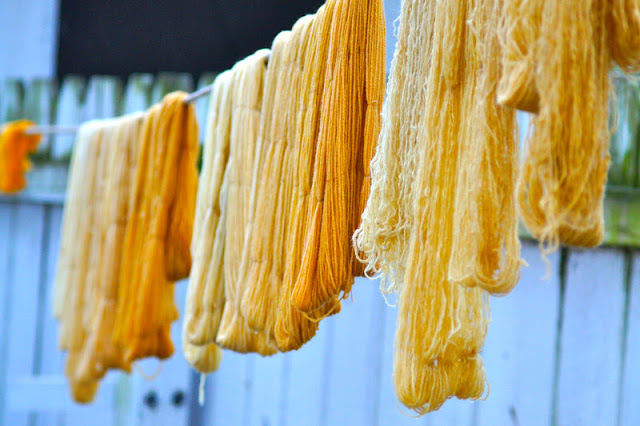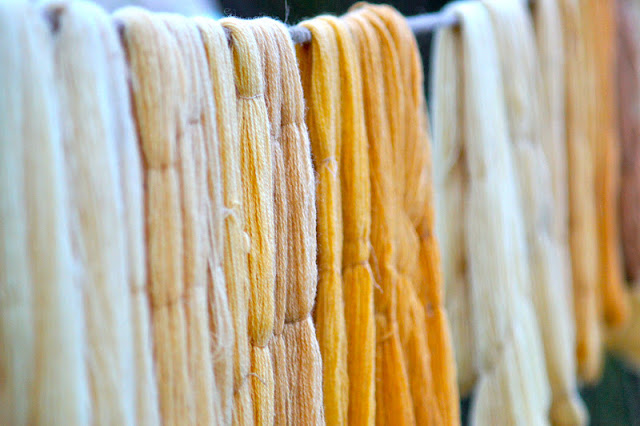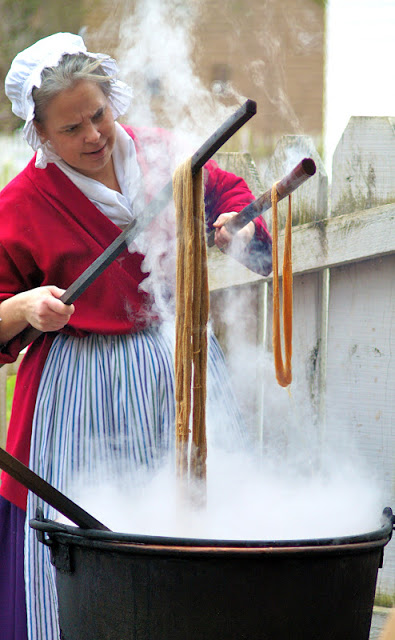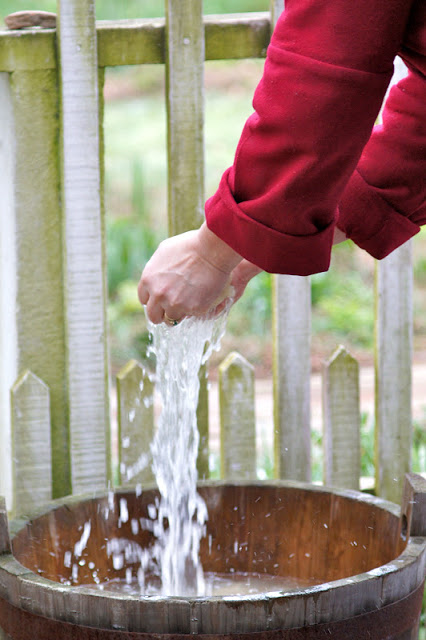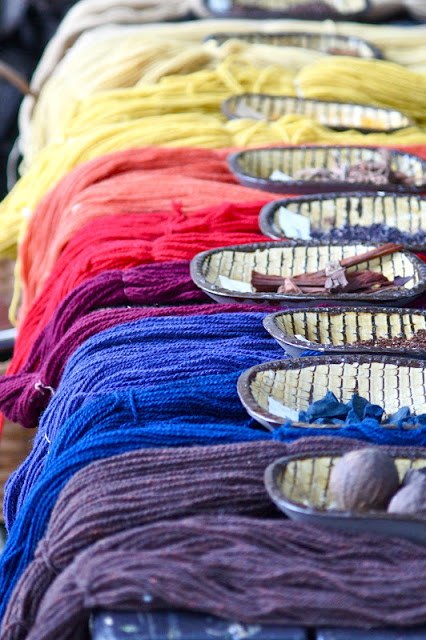“I don’t just use yarn from a store. I buy old sweaters from consignment shops. The older the better, and unravel them. There are countries of women in this scarf/shawl/blanket. Soon it will be big enough to keep me warm. ”
― Laurie Halse Anderson, Wintergirls
― Laurie Halse Anderson, Wintergirls
As we strolled down Duke of Gloucester Street, we passed several colonial stores and tradesmen and craftsmen and women were hard at work. One of the most fascinating ones was yarn-making. We were drawn to it by the smoke that was billowing from the yard, and a group of people gathered around a woman dressed in colonial apparel, as were several others throughout the area.
I found myself intrigued by this method of making yarn, and watched intently to see how they were dyeing yarn. Today, it was yellow/mustard color, and the pictures show them in their final stage – drying on a clothesline.
We learned that yarn was in great demand, and that they would dye the yarn that supplied the fife and drum band, and the soldiers uniforms during the war. They also dyed yarn according to the fashions that were in season in Europe. It was very interesting to note that people at that time showed off their wealth by the colors they wore. For example, if your husband was wealthy, then you would order a luscious green color. I happened to be wearing a green scarf, therefore Aaron was pronounced ‘rich’. If only it were that easy! 🙂
The dyes they used were natural dyes – like walnut, indigo, turmeric. They heat up some water in a large cauldron. Once the water was hot, they would add the ingredient that produced the color, let it blend in, then put in the yarn that was going to be dyed, and basically cook it in the mixture.
Different scanes of yarn are pulled out at different times to get various shades of the same color. Here is a lady who is checking on some yarn and you can tell the colors are obviously different although they are taken out of the same pot.
The yarn is taken out of the boiling water and tossed in a bucket of cold water. It stops the dye from processing further. Then, the yarn goes through a few rigorous hand rinses, before it is is swung in the air, like we would swing a rope to lasso an animal. The yarn is swung round and round to get rid of as much water as possible, and then it is hung up on the line to dry.
Here is an example of the exotic colors that these women and men have managed to produce, using only natural ingredients and colonial methods.
What a splash of incredible color! I hope you enjoyed learning about yarn. It was so cold that day, and seeing all this beautiful yarn was enough to keep me warm 🙂

